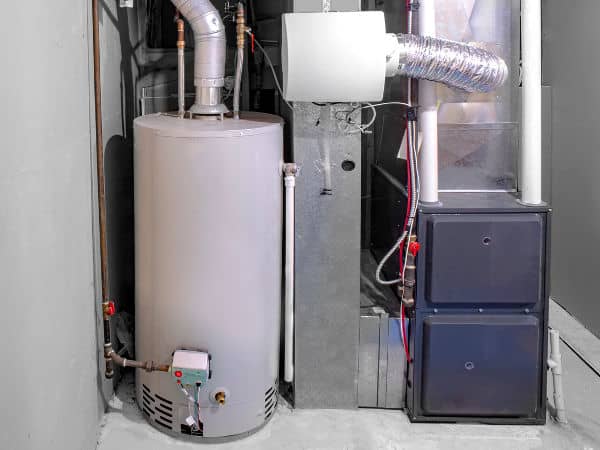Tips on How to Maintain Your Home's Hot Water System Functioning WellStep-by-Step Steps to Caring for Your Home's Hot Water System
Tips on How to Maintain Your Home's Hot Water System Functioning WellStep-by-Step Steps to Caring for Your Home's Hot Water System
Blog Article
How do you actually feel with regards to Water Heater Maintenance Tips You Can't Afford to Forget?

Warm water is essential for day-to-day comfort, whether it's for a revitalizing shower or cleaning dishes. To guarantee your hot water system runs efficiently and lasts much longer, routine maintenance is essential. This article gives practical tips and understandings on exactly how to maintain your home's warm water system to avoid interruptions and costly repair services.
Intro
Maintaining your home's warm water system might seem overwhelming, however with a couple of basic actions, you can ensure it operates efficiently for years to find. This guide covers whatever from recognizing your warm water system to DIY upkeep tips and understanding when to call professional help.
Value of Maintaining Your Hot Water System
Normal maintenance not only expands the life expectancy of your warm water system however also guarantees it runs effectively. Neglecting upkeep can lead to reduced performance, higher energy costs, and also early failure of the system.
Indications Your Warm Water System Needs Maintenance
Recognizing when your hot water system needs focus can avoid significant issues. Keep an eye out for signs such as inconsistent water temperature level, strange noises from the heating unit, or rusty water.
Comprehending Your Hot Water System
Before diving right into maintenance tasks, it's handy to understand the standard components of your hot water system. Commonly, this consists of the water heater itself, pipes, anode poles, and temperature level controls.
Month-to-month Maintenance Tasks
Normal regular monthly checks can aid catch minor problems prior to they intensify.
Purging the Water Heater
Flushing your hot water heater gets rid of debris buildup, enhancing performance and lengthening its life.
Checking and Replacing Anode Rods
Anode rods protect against corrosion inside the tank. Checking and changing them when broken is essential.
Inspecting and Adjusting Temperature Settings
Adjusting the temperature settings guarantees optimum efficiency and safety.
DIY Tips for Maintenance
You can do a number of upkeep jobs on your own to maintain your warm water system in leading problem.
Looking for Leaks
Routinely examine pipelines and links for leakages, as these can result in water damage and higher expenses.
Testing Stress Alleviation Valves
Checking the pressure relief valve guarantees it operates properly and prevents extreme pressure build-up.
Insulating Pipelines
Protecting hot water pipelines decreases heat loss and can conserve energy.
When to Call a Professional
While do it yourself maintenance is advantageous, some issues call for expert proficiency.
Facility Problems Requiring Specialist Aid
Instances consist of major leakages, electrical issues, or if your water heater is constantly underperforming.
Routine Specialist Upkeep Advantages
Specialist maintenance can consist of extensive inspections, tune-ups, and making certain compliance with security criteria.
Conclusion
Normal maintenance of your home's warm water system is necessary for efficiency, long life, and price financial savings. By following these ideas and recognizing when to seek specialist help, you can make sure a reliable supply of warm water without unanticipated disruptions.
Water Heater Maintenance Tips
Test the TPR Valve
Shut off the power and the cold-water supply valve. Place a bucket under the pipe connected to the temperature-pressure-release (TPR) valve on the top or side of the tank. (This valve opens if the tank pressure gets too high.) Lift the valve’s tab to let some water out, then let go. If water keeps flowing, drain the tank partway, unscrew the old valve with a pipe wrench, and install a new one. Check the Anode Rod
Put a hose to the tank’s drain cock and let out a few gallons of water. Now fit a 1 1/16-inch socket onto the rod’s hex head on top of the heater (or under its top plate) and unscrew the rod. If it’s less than ½ inch thick or coated with calcium, buy a new one, wrap its threads with Teflon tape, put it back in the tank, and tighten securely. Use this segmented rod if headroom above the tank is limited. Drain the Tank and Wash Out Sediment
Drain the remaining water in the tank into the bucket, then stir up the sediment on the tank’s bottom by briefly opening the cold-water supply valve. Drain and repeat until clean water comes out of the hose. Close the drain cock, refill the tank, and turn its power back on. Adjust the Temperature
Find the temperature dial on the side of the tank and unscrew its cover. Adjust the dial to 120 degrees using a flathead screwdriver. For every 10 degrees the temperature is lowered, you can expect to save up to 5 percent in energy costs. Turn the water heater off or the thermostat down to its lowest setting if you plan to be away from home for more than three days. Insulate the Pipes
Buy some self-sticking 3/8-inch-thick foam pipe insulation that matches the pipes’ diameter. Slide the foam over the hot-and cold-water pipes as far as you can reach. Insulating the cold-water pipe prevents condensation in summer. Peel the tape and squeeze the insulation closed. If the pipe is 6 inches or less from the flue, cover it with 1-inch-thick unfaced fiberglass pipe wrap. https://www.thisoldhouse.com/plumbing/21016402/how-to-maintain-a-water-heater

Do you really like reading about How to Maintain a Hot Water Heater in a Few Simple Steps? Make feedback further down. We would be delighted to hear your reactions about this blog. In hopes to see you back again in the near future. Are you aware of somebody else who is fascinated about the subject? Do not hesitate to share it. I am grateful for being here. Revisit us soon.
Start Now Report this page